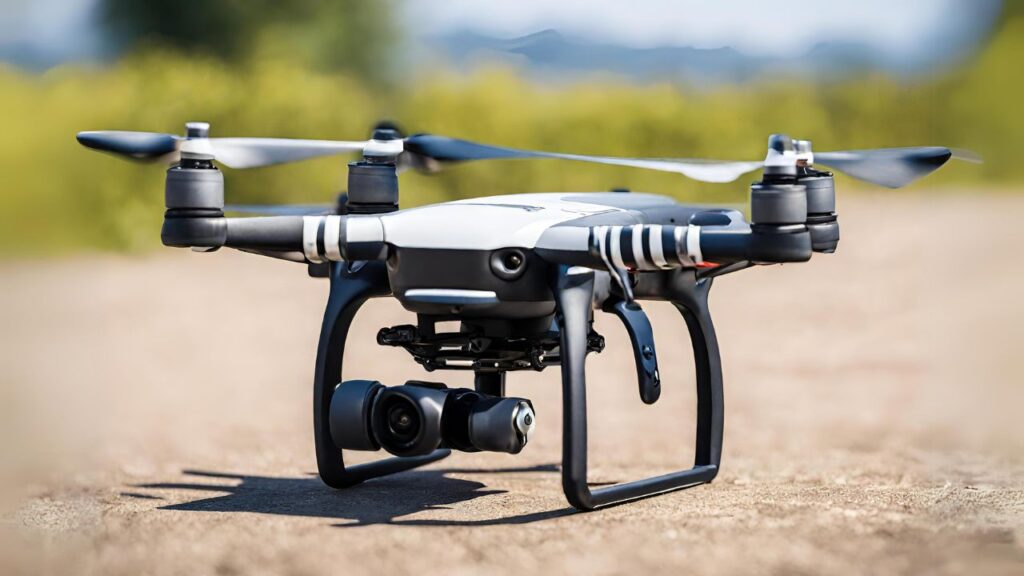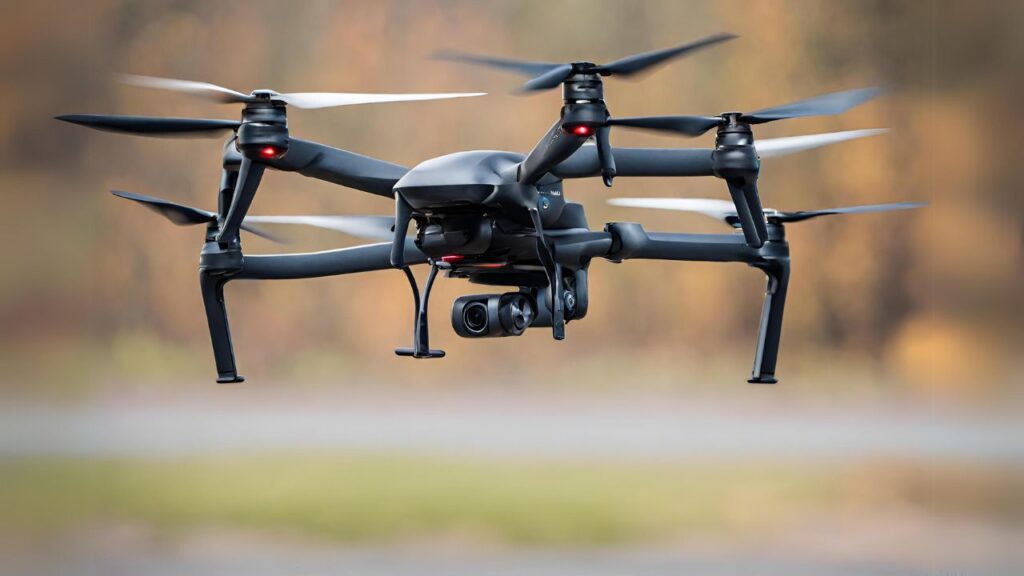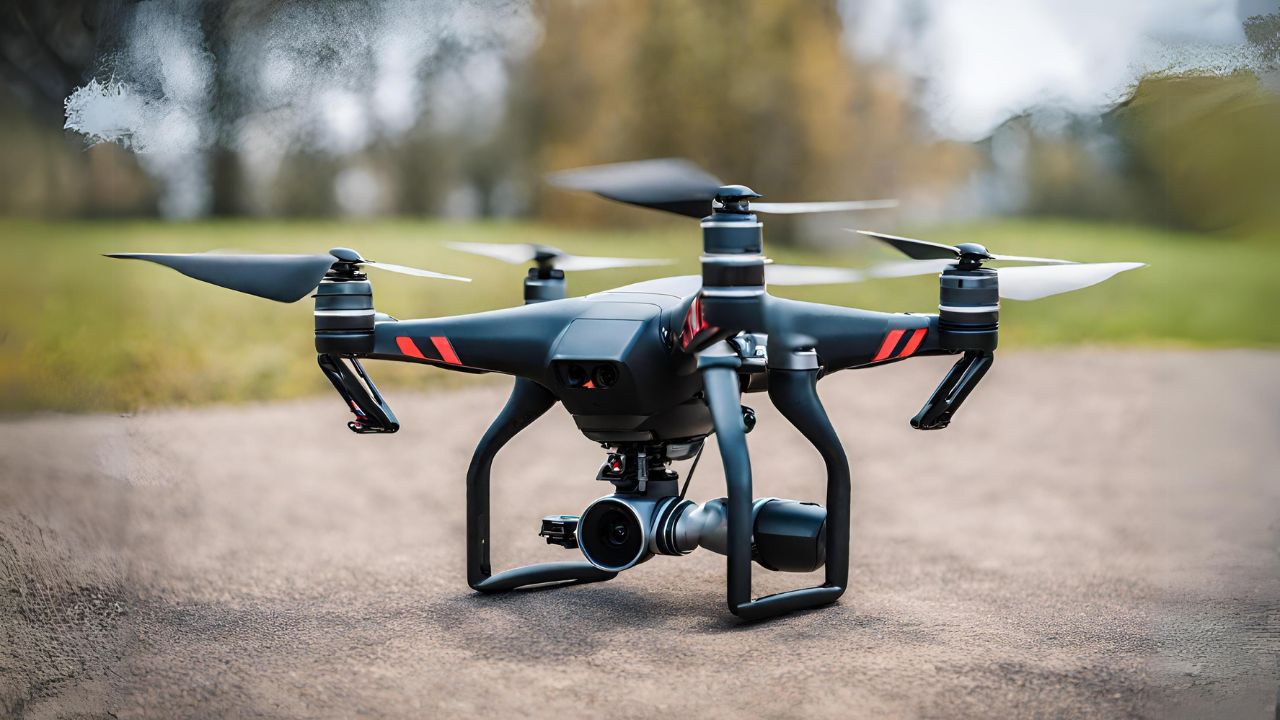Welcome to the world of drones, where the ability to carry payloads opens up a realm of possibilities. In this article, we delve into a crucial question: How much weight can a drone carry? Understanding drone payload capacity is not just about numbers; it’s about unlocking the potential for various applications, from photography to heavy-duty tasks. Join us as we explore the factors influencing payload, real-world examples, consequences of overloading, and tips to optimize your drone’s lifting capabilities. Whether you’re a hobbyist, a professional, or intrigued by the future of drone technology, this comprehensive guide will unveil the essentials and innovations shaping the drone payload landscape. Let’s soar into the details and uncover the limits and potentials of these aerial marvels.
Factors Influencing Drone Payload
Drones come in various shapes and sizes, each designed with a specific purpose and payload capacity in mind. Understanding the factors that influence a drone’s payload is essential for optimizing performance and achieving successful missions.
Drone Size and Weight
The size and weight of a drone play a pivotal role in determining its payload capacity. Smaller drones, often used for recreational purposes or aerial photography, have limited space and power to carry substantial loads. In contrast, larger drones, such as those employed in professional or industrial settings, boast greater payload capacities due to their robust construction and advanced engineering.
Motor Power and Battery Life
The power of a drone’s motors directly correlates with its lifting capabilities. Motors generate the thrust necessary to lift and carry payloads. Drones equipped with high-powered motors can handle heavier loads, making them suitable for tasks like aerial surveying or payload delivery.
Battery life is equally critical. Longer flight times allow drones to sustain the energy needed to lift and transport payloads over extended periods. As batteries are a significant portion of a drone’s weight, striking a balance between motor power and battery capacity is crucial for optimizing payload capabilities.
Propeller Size and Number
Propellers are the primary components responsible for generating lift and controlling the drone’s stability. The size and number of propellers impact the drone’s ability to carry weight efficiently. Larger propellers generally provide more thrust, allowing the drone to lift heavier payloads. Additionally, drones with more propellers may have increased stability, enabling them to carry larger loads without compromising control.
Real-World Examples of Maximum Weight Capacity
To grasp the practical implications of drone payload capacity, let’s explore real-world examples across different drone categories.
Small Drones:
- DJI Mavic Air 2s:
- Payload Capacity: Approximately 0.55 lbs (250g)
- Designed for aerial photography and recreational use, this compact drone strikes a balance between portability and functionality.
- DJI Mini 3:
- Payload Capacity: Estimated to be around 0.44 lbs (200g)
- Catering to beginners and hobbyists, the Mini 3 maintains a lightweight build for easy maneuverability.
- DJI Mavic 3 Pro:
- Payload Capacity: Up to 4.4 lbs (2 kg)
- Positioned as a professional-grade drone, the Mavic 3 Pro offers enhanced payload capacity for advanced photography and videography equipment.
Medium Drones:
- DJI Inspire 3:
- Payload Capacity: Around 7.7 lbs (3.5 kg)
- Geared towards professionals, the Inspire 3 is capable of carrying more substantial camera setups for high-quality aerial cinematography.
- Freefly Alta 8:
- Payload Capacity: Up to 20 lbs (9 kg)
- Designed for professional cinematography and industrial applications, the Alta 8 stands out with its octocopter design and robust payload capacity.
Large Drones:
- DJI Matrice 600:
- Payload Capacity: Up to 13.2 lbs (6 kg)
- A hexacopter designed for industrial applications, the Matrice 600 provides a stable platform for various payloads, including cameras and sensors.
- Airbus UAV:
- Payload Capacity: Varies based on specific models
- Airbus UAVs cover a range of sizes and capacities, often used for surveying, mapping, and industrial inspections.
Consequences of Overloading a Drone

While drones have impressive capabilities, exceeding their designated payload capacities can lead to various consequences that compromise performance, safety, and longevity.
Poor Performance:
Overloading a drone can result in sluggish and inefficient performance. The additional weight strains the motors and other components, making it challenging for the drone to maintain stability and maneuverability. This can affect flight control, responsiveness, and overall user experience.
Reduced Flight Time:
Carrying excess weight demands more power from the drone’s batteries. As a consequence, flight times are significantly reduced. Overloaded drones may struggle to stay airborne for the usual duration, limiting their operational efficiency and requiring more frequent battery replacements.
Damage to Components:
Exceeding payload limits can cause structural damage to the drone. Stress on the frame, motors, and other critical components may lead to wear and tear, reducing the drone’s overall lifespan. Continuous overloading without proper maintenance can result in costly repairs or the need for a replacement.
Catastrophic Failure:
In extreme cases, overloading a drone can lead to catastrophic failure. This may involve a sudden loss of control, mid-air breakdowns, or even crashes. Such failures pose risks not only to the drone but also to people and property in the vicinity. Safety should always be a top priority when operating drones.
Calculating Drone Payload Capacity
Understanding how much weight a drone can carry involves considering the thrust-to-weight ratio, which determines the drone’s ability to lift and maneuver with a given payload.
Thrust to Weight Ratio:
The thrust-to-weight ratio is a key metric indicating the efficiency of a drone’s propulsion system. It is calculated by dividing the total thrust generated by the motors by the drone’s weight. A higher thrust-to-weight ratio indicates better lifting capabilities.
Thrust Required for Basic Operations:
To calculate the thrust required for basic operations, factors like hover throttle and maneuverability must be considered. Hover throttle is the percentage of maximum power needed to keep the drone stationary in mid-air. Maneuverability involves the extra thrust required for agile movements.
How to Calculate How Much Weight a Drone Can Carry:
- Determine Hover Throttle: Measure the percentage of maximum power the drone needs to hover steadily.
- Calculate Additional Thrust for Maneuverability: Factor in the extra thrust required for responsive and agile movements.
- Account for Safety Margin: Include a safety margin in the calculations to ensure the drone operates within a stable range.
- Refer to Manufacturer Specifications: Cross-reference the calculated thrust with the manufacturer’s specifications to ensure alignment with the drone’s design limits.
By considering these elements, drone operators can estimate the maximum payload a drone can carry while maintaining stability and control.
Drone Payload Examples
Drones cater to a wide range of users, from enthusiasts capturing scenic landscapes to professionals conducting critical operations. Understanding the payload capacities of different drone categories sheds light on their intended applications.
Mini Drones:
Mini drones are compact, lightweight, and often serve recreational purposes. While their payload capacities are limited, they excel in agility and ease of use.
- Example: DJI Mini 3
- Payload Capacity: Approximately 0.44 lbs (200g)
- Ideal for hobbyists and beginners, the Mini 3 prioritizes portability and user-friendly features over heavy payload capabilities.
Hobby Drones:
Designed for enthusiasts seeking a balance between performance and recreational use, hobby drones offer more advanced features and higher payload capacities than mini drones.
- Example: DJI Mavic Air 2s
- Payload Capacity: Around 0.55 lbs (250g)
- Suited for aerial photography and enthusiasts, the Mavic Air 2s provides a step up in payload capacity without sacrificing portability.
Professional Drones:
Professional drones are equipped with advanced features, enhanced stability, and higher payload capacities. They are tailored for photographers, filmmakers, and other professionals requiring top-tier aerial capabilities.
- Example: DJI Inspire 3
- Payload Capacity: Approximately 7.7 lbs (3.5 kg)
- Geared towards professionals, the Inspire 3 stands out with its ability to carry sophisticated camera setups, making it a staple in the cinematography industry.
Heavy Lift Drones Overview
As drone technology advances, heavy lift drones have emerged as powerful tools capable of carrying substantial payloads. These drones find applications across various industries, each with unique requirements for lifting and transporting significant weights.
Applications of Heavy Lift Drones:
Engineering Projects: Heavy lift drones are employed in engineering projects for tasks such as aerial surveying, mapping, and inspection of infrastructure. Their ability to carry advanced sensors and equipment enhances efficiency.
Cargo and Delivery: In the realm of logistics, heavy lift drones are envisioned for cargo transportation and delivery. Their capacity to carry sizable loads makes them promising for quick and efficient deliveries.
Agriculture Sector: Drones play a crucial role in precision agriculture. Heavy lift drones can carry sensors and equipment for crop monitoring, spraying, and other agricultural applications.
Disaster Relief: Heavy lift drones are valuable in disaster-stricken areas for delivering supplies, conducting reconnaissance, and aiding in search and rescue operations.
Military Service: Military and defense sectors utilize heavy lift drones for a range of applications, including surveillance, reconnaissance, and transport of essential equipment.
Components of Heavy Payload Drones:
Heavy Lift Drone Motors: These motors are designed for increased power and efficiency to lift and maneuver heavy payloads. High-quality motors are crucial for stability and control.
Heavy Lift Drone Propellers: Larger and sturdier propellers are employed to generate the necessary thrust for lifting heavier loads. Propeller design significantly influences a heavy lift drone’s overall performance.
Heavy Lift Drone Gimbal: A robust gimbal system is essential for stabilizing cameras or sensors, ensuring smooth and precise data capture during heavy lift operations.
Best Heavy Lift Drones in 2023

Exploring heavy lift drones unveils a realm of possibilities for industries requiring substantial payload capacities. Here are some of the best heavy lift drones in 2023, each excelling in specific applications:
JOUAV PH-20 – Best LiDAR Drone (Payload: 22 lbs)
The JOUAV PH-20 stands out as an exceptional LiDAR drone, designed for precision surveying and mapping applications. Its impressive payload capacity of 22 lbs allows for the integration of advanced LiDAR sensors, making it a valuable tool for high-precision data collection.
JOUAV CW-30E – Best Surveillance Drone (Payload: 20 lbs)
Tailored for surveillance and reconnaissance, the JOUAV CW-30E boasts a payload capacity of 20 lbs. This heavy lift drone is equipped with features that make it an ideal choice for applications requiring extended flight times and versatile payload options.
Freefly Alta X – Best Cinema Drone (Payload: 35 lbs)
Renowned in the cinematography industry, the Freefly Alta X is a heavy lift drone designed for carrying professional cinema cameras. With a payload capacity of 35 lbs, it provides filmmakers with the capability to capture stunning aerial shots with high-end camera setups.
JOUAV CW-80E – Best Mapping Drone (Payload: 50 lbs)
The JOUAV CW-80E stands as a powerful mapping drone, capable of carrying a payload of up to 50 lbs. This makes it suitable for applications requiring advanced mapping sensors and equipment, such as large-scale surveying projects.
Draganfly Heavy Lift Drone – Best Delivery Drone (Payload: 50 lbs)
Positioned as a delivery drone, the Draganfly Heavy Lift Drone boasts a payload capacity of 50 lbs. This drone is designed for efficient and secure delivery of packages in various industries, showcasing the potential for heavy lift drones in logistics.
Ehang 184 – Best Large Drone (Payload: Lifts a Person – 200 lbs)
The Ehang 184 is an innovative large drone designed for passenger transport. It can lift a person weighing up to 200 lbs, reflecting the evolving landscape of aerial mobility and transportation.
GRIFF Aviation 300 – Extra Large Drone (Payload: 500 lbs)
The GRIFF Aviation 300 is an extra-large drone with an astounding payload capacity of 500 lbs. This heavy lift drone is suitable for demanding industrial tasks, including transporting heavy equipment and supplies.
FAQ
Q: How much does a large drone cost?
A: The cost of large drones varies based on factors such as payload capacity, features, and intended applications. Prices can range from a few thousand to several hundred thousand dollars for high-end industrial drones.
Q: Can you buy a drone that can lift a person?
A: Yes, drones like the Ehang 184 are designed for passenger transport and can lift a person. However, such drones are subject to strict regulations, and their use for transporting humans is carefully monitored.
Q: What is the largest drone you can fly without a license?
A: The regulations regarding drone licensing vary by country. In many places, a license is required for drones above a certain weight limit, typically around 55 pounds (25 kg). Always check local aviation authorities for specific guidelines.
Q: How far can a large drone fly?
A: The flight range of large drones depends on factors like battery capacity and intended use. Commercial drones can typically fly for 20-30 minutes, while specialized models may have longer flight times.
Q: How Much Weight Can a Drone Carry?
A: The payload capacity of a drone varies widely. Mini and hobby drones may carry a few hundred grams, while heavy lift drones can handle payloads ranging from 20 lbs to several hundred pounds.
How to Make a Drone Lift Heavier Payloads?
- Bring only the accessories you need: Minimize unnecessary accessories to reduce overall weight.
- Change the frame: Opt for a frame design that accommodates larger payloads without compromising stability.
- Shrink the frame support: Streamlining the frame structure can reduce weight and improve lifting capabilities.
- Replace the motor: Upgrading to more powerful motors enhances lifting capacity.
- Take off prop guards or buy lighter props: Removing prop guards or using lighter propellers can contribute to weight reduction.
What Does the Future Hold for Drone’s Payload Capacity?
As technology continues to advance, the future of drone payload capacity promises exciting developments and innovations. Several key trends and areas of exploration are shaping the trajectory of drones and their ability to carry heavier loads.
Advancements in Batteries:
Improvements in battery technology are at the forefront of enhancing drone capabilities. The development of lighter and more energy-dense batteries will contribute to increased flight times and payload capacities. Researchers and manufacturers are actively exploring new materials and designs to revolutionize drone power sources.
Motor and Propeller Innovations:
Ongoing research in motor and propeller technologies aims to create more efficient and powerful propulsion systems. Advanced motor designs, coupled with innovative materials for propellers, will play a crucial role in elevating the thrust-to-weight ratio of drones. These enhancements will directly impact a drone’s lifting capabilities.
Emerging Drone Technologies:
The integration of artificial intelligence (AI) and machine learning (ML) into drone systems opens up new possibilities for optimizing payload management. Smart algorithms can dynamically adjust flight parameters based on real-time data, enabling drones to carry payloads more efficiently while ensuring stability and safety.
Specialized Payload Designs:
As industries increasingly rely on drones for specific applications, payload designs will become more specialized. Tailored payloads for tasks such as medical delivery, environmental monitoring, or industrial inspections will be developed to meet the unique requirements of each application.
Regulatory Developments:
Advancements in payload capacity will also prompt regulatory considerations. Aviation authorities will likely adapt regulations to address safety concerns associated with heavier payloads. Striking a balance between innovation and safety will be essential to facilitate the responsible integration of high-capacity drones into various industries.
Integration of Hybrid Propulsion Systems:
Hybrid propulsion systems, combining electric and alternative power sources, are being explored to extend flight ranges and increase payload capacities. These systems offer the potential for longer operational durations and the ability to carry heavier loads over extended distances.
The ongoing convergence of these trends suggests a future where drones can handle more substantial payloads across diverse applications. From improved battery life to cutting-edge propulsion systems, the evolution of drone payload capacity is set to revolutionize industries ranging from delivery services to infrastructure inspections.
Conclusion
The exploration of drone payload capacity reveals a dynamic landscape marked by continuous innovation and transformative advancements. From the modest lifting capabilities of mini drones to the impressive heavy lift capabilities of industrial giants, the evolution of payload capacity is shaping the diverse applications of drones. As we navigate through the intricacies of factors influencing payload, real-world examples, and the consequences of overloading, it becomes evident that responsible operation is paramount. The future holds promise with ongoing developments in battery technology, motor innovations, and the integration of AI, paving the way for drones to carry heavier loads more efficiently. With specialized payload designs and regulatory adaptations, the horizon of possibilities expands, heralding an era where drones play integral roles in industries ranging from logistics to healthcare. As we anticipate the continued fusion of technology and imagination, the question evolves from “How much weight can a drone carry?” to “What incredible feats will drones accomplish next?” The journey into the future of drone payload capacity is an exhilarating one, defined by limitless potential and the boundless skies above.




